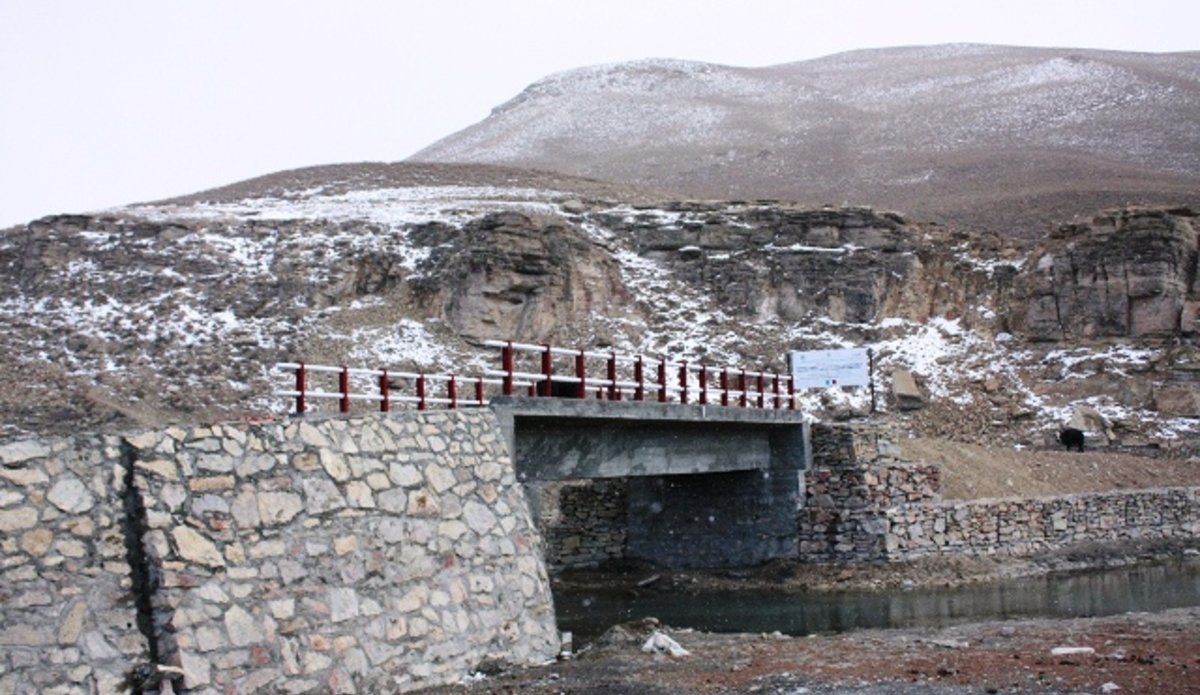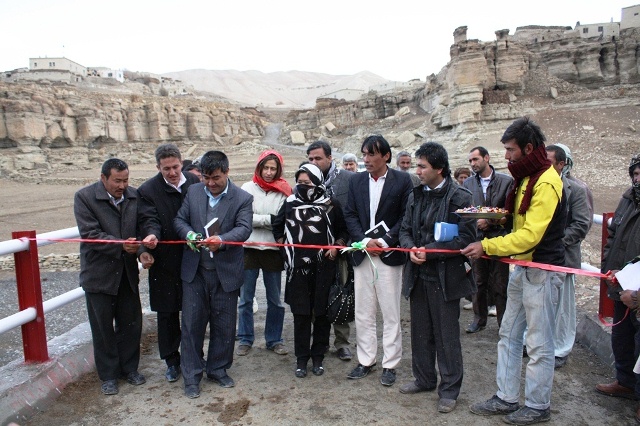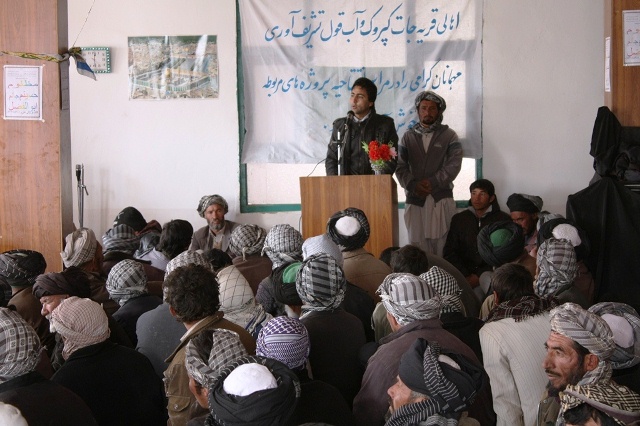UN-supported development projects help resettle returning Afghan refugees
BAMYAN - A number of development projects implemented in the remote hinterlands of Afghanistan’s central Bamyan province – with support from the United Nations refugee agency and handed over to the local community recently – have directly benefitted some 2,400 people, most of them returnees from Iran or Pakistan, according to local residents and UN officials.
“The completion of these projects have helped us a lot, they are very useful, especially the bridge and the road construction project, because before we used to take a longer route to get to the provincial capital,” said a community elder from Koprook village, Syed Ismael.
“In a medical emergency situation, it was very difficult for us,” Mr. Ismael added.
Koprook is a remote village located around 71 kilometres north-west of the province’s capital, also named Bamyan. It is home to 256 families, of these, 153 are made up of returnees and internally displaced persons (IDPs). The nearby village of Ab-Qul is home to 85 families, with 45 of these being returnee families.
A returnee is a refugee who has returned to his or her home location. Most of the Kooprok villagers left their homes in the early 1980s as fighting in the area made it impossible to find work or food. There was further displacement during the rule of the Taliban regime, with families fleeing to Iran and Pakistan, as well as other locations within Afghanistan.
The recently-completed projects handed over to the local communities of Koprook and Ab-Qul on 30 October include a bridge over a seasonally-flooded river, health clinics, a micro hydro-electric plant, shelters, a water dam for irrigation and a 1.3-kilometre stretch of paved road with culverts – all put in place through the project partners of the Office of the UN High Commissioner for Refugees (UNHCR).
The new road will allow for smoother travel around the village of Kooprok. With the new bridge, locals are able to access a major asphalt road by travelling a distance of 11 kilometres instead of having to circle the Band-e-Amir Lake, thus avoiding a dirt road route of 30 kilometres, according to UNHCR.
The Bamyan projects are part of the efforts of the UN refugee agency to support returnees and IDPs in Afghanistan. In 2010, UNHCR supported the construction of 21 shelters in the area – 15 in Kooprok and another six in Ab-Qul.
“Koprook is a village where most of the families are either returnees from neighbouring countries or internally displaced,” said a UNHCR official, Jawad Wafa, who oversaw the project implementation. “These projects were implemented here to respond to most of the needs of the community and to encourage more refugees to return.”
With a 1,500 cubic metre capacity, the dam is expected to have a particularly strong impact for the village residents in relation to their agricultural work – in addition to livestock, agriculture is the major source of income for the villages’ population. A large area of dry land in the in the villages can now be converted into wheat or potato growing areas.
“The biggest problem of our community was lack of agriculture water, with the completion of water dam project now we have enough water for agriculture,” said a community elder of Koprook, Abdul Karim Alizada.
Afghanistan’s refugee situation is the world’s largest and most protracted. The number of returned Afghans since 2001 constitutes nearly a quarter of the entire population of 27 million.
In a global report released earlier this year, UNHCR said Afghanistan remains the world’s top producer of refugees, a position it has held for 32 years. On average, one out of every four refugees worldwide is Afghan, with 95 per cent of them living in Pakistan or Iran, said the 2012 Global Trends Report.
In the past decade, some 5.7 million Afghan refugees have returned to Afghanistan in the world’s largest repatriation operation. Nevertheless, a 40 per cent decrease has been observed in return trends this year. There are still 2.4 million Afghan refugees in Pakistan and Iran – with 1.6 million and 840,000 refugees in each country, respectively. The two are the largest refugee hosting countries globally.
 UN
UN











